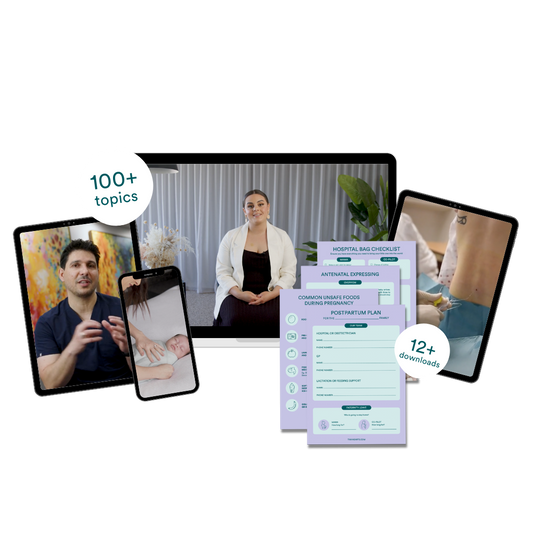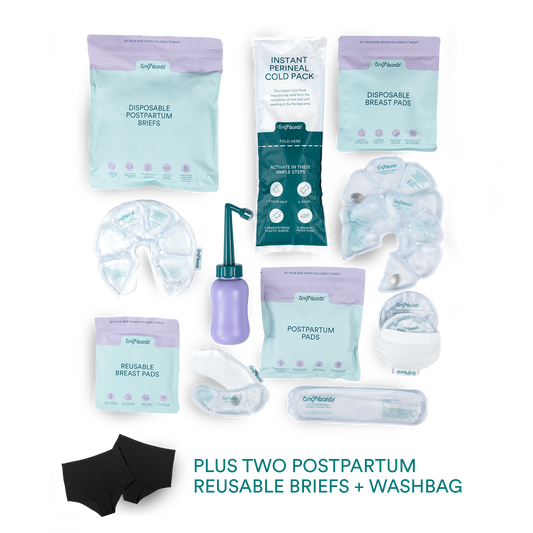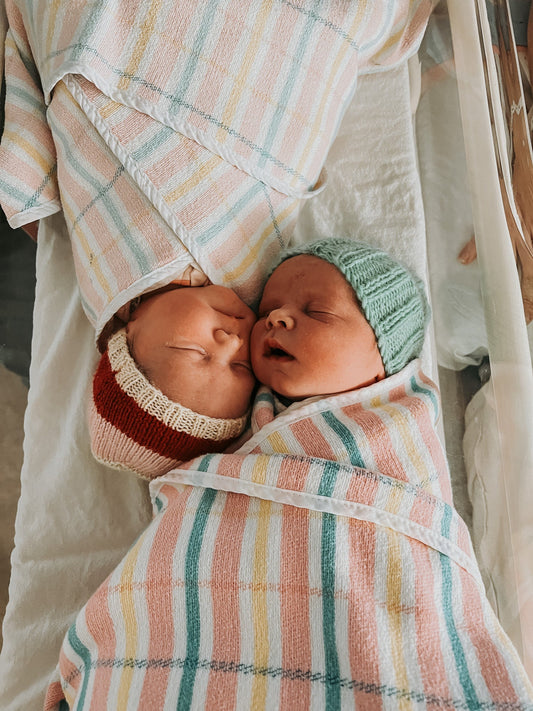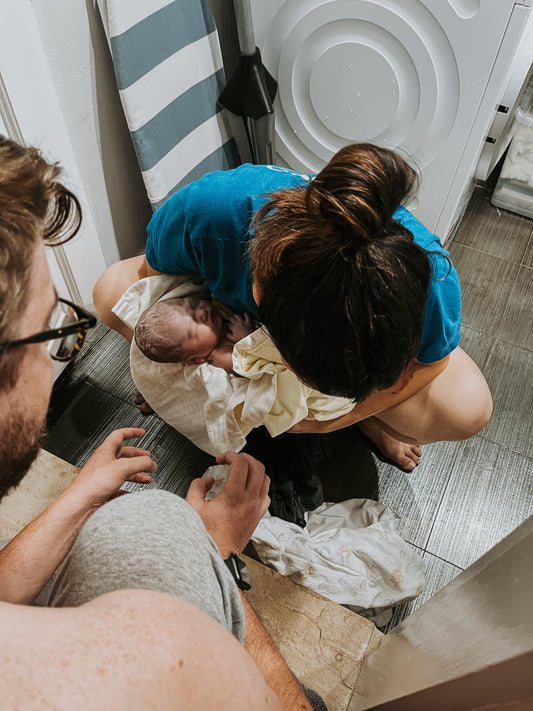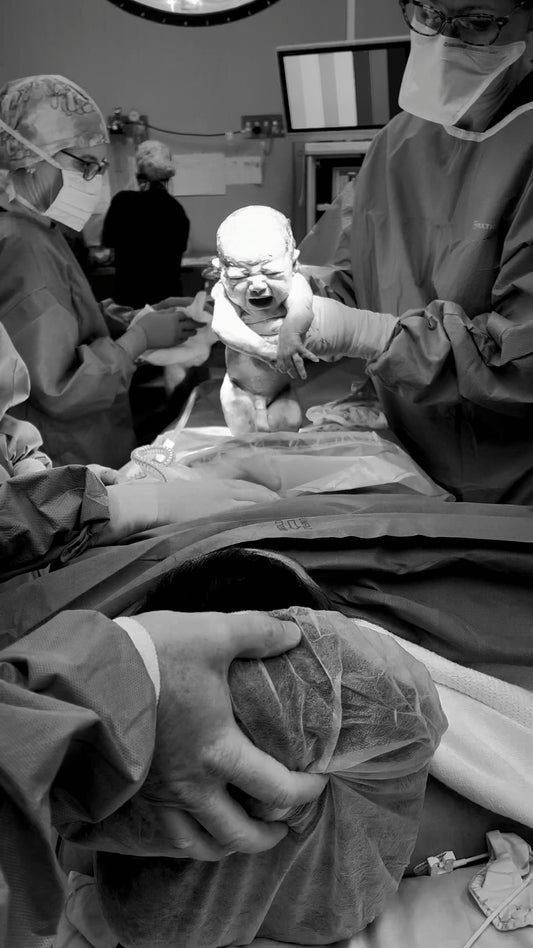how to keep your little ones safe this halloween
It's that time of year again; when we dress up with our kiddos and take them out trick or treating to collect lollies. Halloween! 🎃 👻
I know this is something that's relatively new to Australia, but there are lots of families who participate now, so it's important that we consider how to keep our little ones safe amongst the hype and excitement while out and about enjoying this new tradition.
1. road safety
When out trick or treating, there are usually a lot of people around, and you may be potentially in an unfamiliar place with many distractions. With all of this going on, plus the excitement of Halloween, little ones may get so excited or distracted that they don't even think to look before crossing the road. Other times, they're too little to know how to cross a road safely yet. With all of that in mind, it's a good idea to:
- Dress your little one in bright colours or reflective clothing
- Give the kiddos glow sticks or flashlights to carry, particularly as the sun is setting or if you're out trick or treating after dark Stick to the footpaths instead of walking on the road
- Keep your kiddo within arms length, particularly near main roads and driveways
- Teach your little one to stop at driveways and check for cars coming in or reversing out
- Teach your kiddos to stop a few steps back from the curb edge instead of right on it
Look back through our socials for more tips on teaching road safety to your little ones. And if you're out behind the wheel this Halloween, take extra care, look twice before reversing and slow down on the roads.
lost kiddos
It's horrible to think about, but the reality is that sometimes little ones can and do become separated from their families or those who are looking after them. To try and prevent this, keep your little one close by, try and minimise distractions, dress them in bright clothing, educate them not to wander off and not to talk to strangers. Another good idea is to write your phone number on the inside of their forearm or on a paper bracelet if you're going somewhere where there are a lot of people, and the chance of them getting lost is significantly higher than normal. Another good idea is to take a picture of them before you go so if they do get lost, you've got a very recent photo of them in what they are currently wearing.
Sometimes regardless of how much we try, accidents like losing your little one can and do happen. If you find yourself in this scenario, you need to act quickly:
- Shout: make as much noise as you can to get as much attention as you can. Try yelling things that will get attention, such as "my 2yo son is missing. He has brown hair, green eyes and is wearing a Batman costume. Lost boy, please help me look".
- Check bodies of water, unlocked cars and other dangerous spaces first. That's in case they have accidentally fallen into a pond, lake or pool that's close by, have been accidentally trapped in a car, which can heat up quickly or are in another dangerous situation.
- Call for help: if you've searched the immediate area and haven't yet found your little one, it's time to call the Police on 000 for help.

choking
Anyone can choke on anything, but foods and objects that are hard, round, slippery or made from marshmallows or popcorn increase this risk. While you don't have control over what kind of lollies people will give out to your little one, you do have control over what they eat. Remove any lollies for your kiddo that are hard like Minties, round like a Gobstopper, contain whole or half nuts like Snickers, and marshmallows or popcorn. Something I learnt last year was to check the cheap lolly pops to make sure the tops aren't going to come straight off and present a choking hazard.
If you are letting your little one have a lolly while out, stop and ask them to sit while eating, because walking or running around increases the risk of choking compared to sitting still and upright while eating. It's also important to make sure they're chewing slowly, like normal, instead of rushing to eat more lollies.
If bub has a partial obstruction, encourage coughing, watch and wait, and call for help if the obstruction isn't cleared. Most importantly, know your choking first aid. Call 000 and put your phone on speaker while you use '5 to stay alive'. 5 back blows followed by 5 chest thrusts, and repeat this over and over again.
allergies
Anyone can cause an allergic reaction, which is why it's so important to introduce allergens one at a time to be able to pinpoint the exact trigger which is causing the allergic reaction. For this reason, if your little one hasn't tried some of the lollies in their basket before, it's best to remove them until a later date when you can introduce the ingredients in them one at a time. It's also a good idea to buy single-wrapped lollies to minimise others touching all the lollies [prevents germs, but also prevents contamination from other allergens they may have already touched].
If your little one has a known allergy, triple-check the ingredients before giving them any lollies, only take single-wrapped lollies, and keep some safe lollies at home in case the neighbourhood lollies aren't safe.
Signs of an allergic reaction include:
- Skin rashes [hives, redness or welts]
- Swelling of the face, lips or eyes
-Tingling in the mouth [remember, little ones may describe this as the food tasting funny, e.g. spicy]
- Abdo pain or vomiting [remember, this may indicate anaphylaxis if it follows an insect bite]
- Swelling or tightness in the throat or tongue
- Wheezing or persistent coughing Difficulty or unusual breathing Hoarse voice
- Dizziness, collapse or becoming pale + floppy
If you identify any signs of an allergic reaction, remove the trigger food/ allergen and treat immediately, depending if the reaction is mild-moderate or severe. Mild-moderate = Consider an age-appropriate anti-histamine, monitor and seek medical attention if concerned. Severe = call 000 and give bub's auto-injector such as an EpiPen if prescribed. In either case, stop giving your little one the allergen trigger until advised otherwise by medical professionals, and see your GP or an Allergist for further testing and advice.

sunburn
Sunburn is a radiation burn to the skin. Signs that your bub has been burnt can start to appear quickly, and their skin will start turning red and develop over a 2 - 6 hour period, and sometimes even up to 72 hours later.
If you're out and about in the late afternoon, you and your bub are still at risk of a sunburn in the Australian climate, even if it's cloudy. Your little one has delicate and sensitive skin that burns quickly + easily. The more sun exposure at an early age, the greater the chance of skin cancer later in life. With all of this in mind, it's important to take precautions.
So to protect our young babies best, we would do all of these things first:
- Cover as much skin as possible with lightweight clothes or a wrap
- Wear a wide-brimmed hat that covers the face, ears + back of the neck
- Use baby sunnies for their little eyes
- Seek out and stay in the shade
For little ones, the last line of defence is sunscreen. The Australasian College of Dermatologists doesn't recommend sunscreen use on bubs under 6m because their skin is highly absorbent.
Always apply sunscreen:
- 20 minutes before sun exposure, again 30 minutes later and repeat every 2 hours [regardless of package instructions, particularly if swimming]
- Generously - most people use too little
When choosing a sunscreen for older bubs, kiddos and yourselves, look for a sunscreen that is:
- SPF 30 or higher [50+ is the best]
- Water-resistant and board spectrum - offers the best protection
- Must be TGA approved - if the website doesn't say 'TGA approved L: followed by a number, do not buy it
- Developed explicitly for little ones; they will be less harsh
Sensitivities to sunscreen can range from mild to severe. Always patch test the sunscreen on a small area of your bub's skin to check for any reactions before applying it all over. If a reaction occurs, immediately wash off.
bites + stings
Depending on where you are trick or treating, your little one may be bitten or stung by a range of land-based animals. Land-based animal bites refer to bites and stings from animals that live on the land, like ants, fleas, mosquitos, bees + spiders. If you didn't see what has bitten your little one, it can be tricky to work it out.
Ant bites look like little, red pimple marks on the skin, while a bee sting looks like a pink or red swollen area of skin, with a small sting potentially sticking out in the middle. Wasp stings may look similar [like a welt], but a small white sting may be in the middle. Flea bites look like small red bumps that are usually grouped in several bites or in a line. Mosquito bites look like red welts, and spider bites look like small, red lumps, and there might be two tiny puncture bites that are close together, but this isn't always the case.
If you notice a bite or sting, you should:
- Wash the area around the bite or sting
- For bees, scrape the sting out using something like a credit card
- Apply a cool pack to the bite site to reduce pain + swelling
- Consider an age-appropriate anti-histamine medication if the itching or stinging continues
- Monitor for signs of anaphylaxis and call 000 if you suspect it is developing
Take bub to see a doctor if your little one is:
- In pain
- The bite site is irritated or swollen
- The site shows signs of infection [redness, pus, not healing]
- The redness from the bite is spreading or tracking in a line
- The bite, stinging and itching is unresolved within 24-48 hours
- You're concerned
For Red-back and White-tail spiders:
- Wash around the area
- Ice the area
- Attempt to take a photo of the spider to identify the spider [DON'T get close enough to get bitten!!]
- Take your little one to ED for medical attention
Funnel-web spiders + snake bites:
- Pressure immobilisation techinque
- Call 000 and keep your little one as still as possible until paramedics arrive
I hope this helps you prepare for Halloween, armed with the info you need to protect your precious Tiny Heart. In the original post, I'd love to hear about if your family participates in Halloween. Tag your loved ones while you're there.
Helping you feel prepared for parenthood is what Tiny Hearts is all about. Book into our baby + child first aid class, and let us empower you to face parenthood without fear. 💗
online baby & child first aid
$145
Learn baby & child first aid from your device at home! Purchase now and learn right away.
Our instant access course includes over 38 videos and 15 bonus downloads including content on whooping cough, croup and more!


